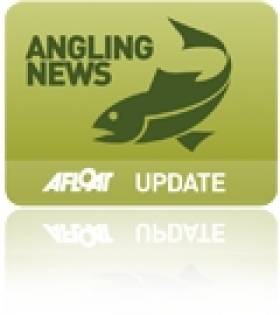Displaying items by tag: wheelchair
#inland – The Clodha Wheelyboat, a wheelchair accessible flat deck boat, was today launched by Minister of State for Natural Resources, Joe McHugh TD, at Rooskey Lough, Co Donegal.
The Clodha is the first boat of its kind in the Northwest and has been funded by Inland Fisheries Ireland (IFI) and Rural Recreation Funds. It is operated by the Creeslough and District Anglers and was sourced from the Wheelyboat Trust, a registered charity in England. The boat provides wheelchair users with hassle-free and independent 'roll-on, roll off' access on board via an external ramp and a hydraulic platform. The deck is open and level throughout, and wheelchair using anglers can sit at the bow, the stern or the helm of the boat.
Speaking at the launch, Minister McHugh said: "The Clodha Wheelyboat is a wonderful addition to the angling infrastructure in Donegal. This area has some of the most beautiful angling in Ireland and is today becoming even more accessible by providing disabled people with the opportunity and freedom to enjoy angling here.
"I encourage anglers of all abilities to come to Rooskey Lough to try this boat and, of course, the fishing. I congratulate the Creeslough and District Angling Club who have worked on this ambitious initiative which will support economic development and jobs here in Donegal.'
The Creeslough and District Anglers have been at the forefront of developing angling tourism in Donegal through the provision and organisation of angling to locals and tourists alike. This development project has seen the resurfacing of the access road leading to Rooskey Lough; the provision of a boat shed; the installation of disabled chemical toilets; provision of an ESB connection; and disabled angler access along with the new specialist angling boat.
The club is a member of the Donegal Angling Tourism Alliance and has been instrumental in progressing the marketing of Donegal in a strategic alliance with IFI and the recent Donegal Angling Holidays project through EU-funded rural development programme 'LEADER'. The programme supports activities that improve quality of life in rural areas and which help diversify the rural economy.
Wheelchair User Learns to Kitesurf
#KITESURFING - A wheelchair user from Northern Ireland is defying what's generally expected of people with disabilities by learning how to kitesurf.
As Australian surfing website Seabreeze reports, Jason McGrugan has been attempting to teach his friend Jen how to kiteboard over the past few weeks, and has been posting videos of their progress online.
So far Jen has learned to fly the kite on the beach, set it up on her own and body drag upwind.
The next step will be riding on the board, which will require a custom seat and board that the duo is currently designing.
Once that's accomplished, it's hoped that Jen will be up and riding the waves in the first half of the new year.
Check out the first in Jason and Jen's video series below:






























































